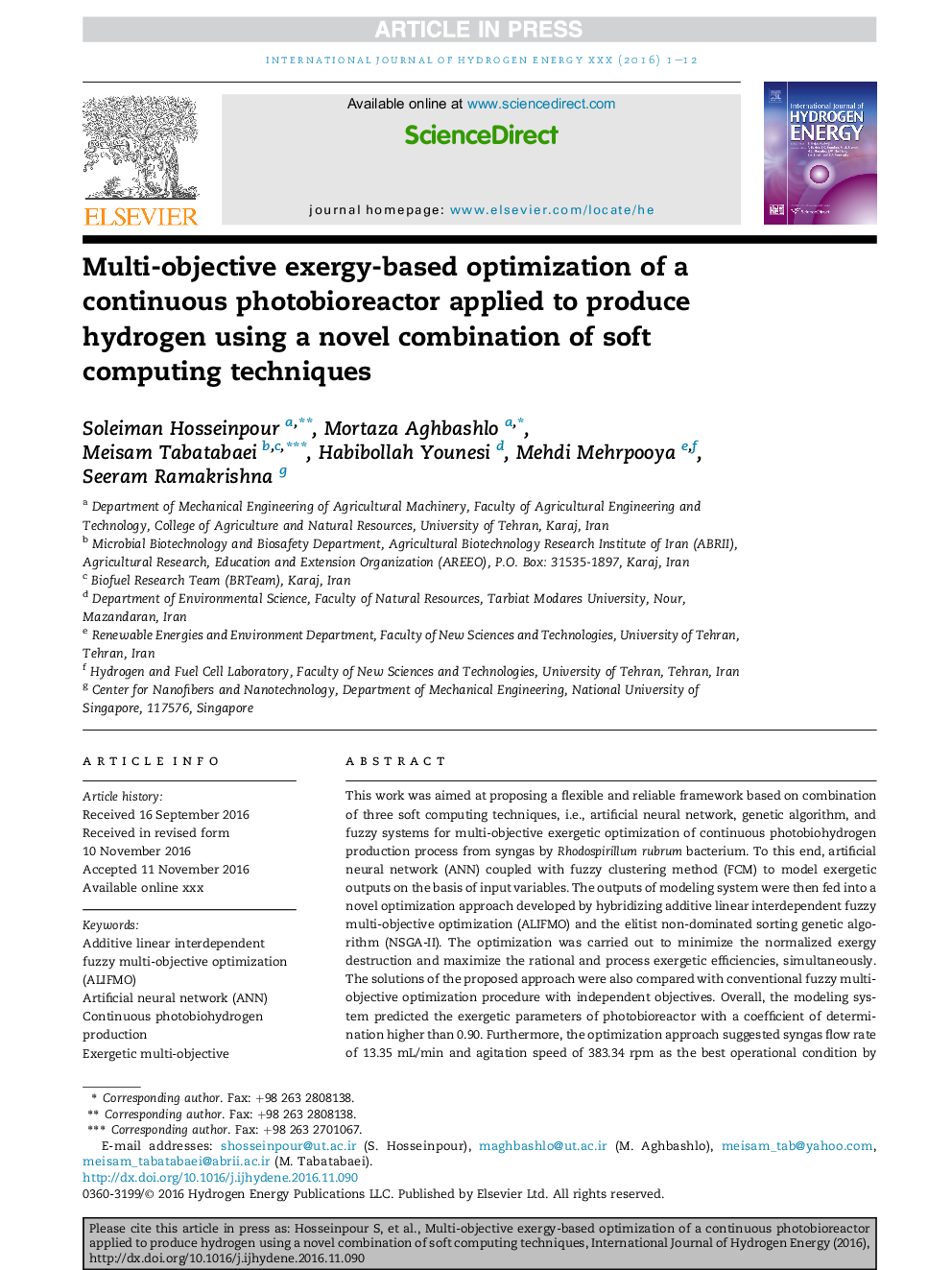| Article ID | Journal | Published Year | Pages | File Type |
|---|---|---|---|---|
| 5148336 | International Journal of Hydrogen Energy | 2017 | 12 Pages |
Abstract
This work was aimed at proposing a flexible and reliable framework based on combination of three soft computing techniques, i.e., artificial neural network, genetic algorithm, and fuzzy systems for multi-objective exergetic optimization of continuous photobiohydrogen production process from syngas by Rhodospirillum rubrum bacterium. To this end, artificial neural network (ANN) coupled with fuzzy clustering method (FCM) to model exergetic outputs on the basis of input variables. The outputs of modeling system were then fed into a novel optimization approach developed by hybridizing additive linear interdependent fuzzy multi-objective optimization (ALIFMO) and the elitist non-dominated sorting genetic algorithm (NSGA-II). The optimization was carried out to minimize the normalized exergy destruction and maximize the rational and process exergetic efficiencies, simultaneously. The solutions of the proposed approach were also compared with conventional fuzzy multi-objective optimization procedure with independent objectives. Overall, the modeling system predicted the exergetic parameters of photobioreactor with a coefficient of determination higher than 0.90. Furthermore, the optimization approach suggested syngas flow rate of 13.35Â mL/min and agitation speed of 383.34Â rpm as the best operational condition by considering the preferences of process exergy efficiency, rational exergy efficiency, and normalized exergy destruction, respectively. This condition could yield the normalized exergy destruction of 1.56, process exergetic efficiency of 21.66%, and rational exergetic efficiency of 85.65%. The obtained results showed the superiority of the proposed approach over the conventional fuzzy method in optimizing the complex biofuel production systems.
Related Topics
Physical Sciences and Engineering
Chemistry
Electrochemistry
Authors
Soleiman Hosseinpour, Mortaza Aghbashlo, Meisam Tabatabaei, Habibollah Younesi, Mehdi Mehrpooya, Seeram Ramakrishna,
